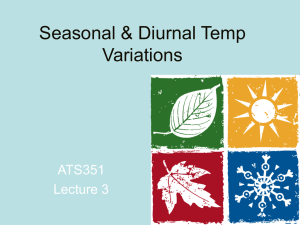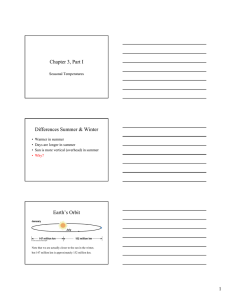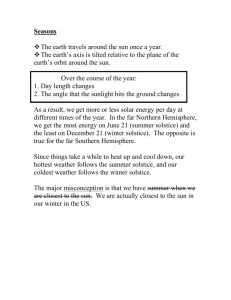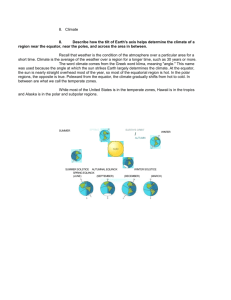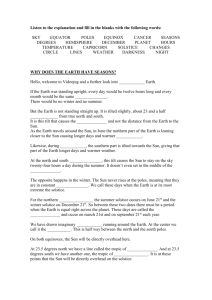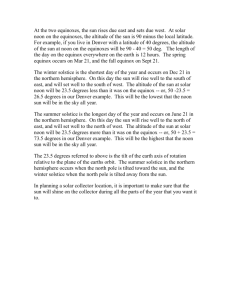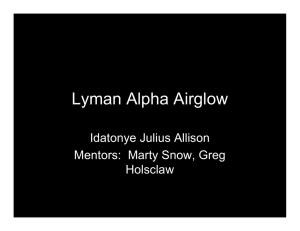Earth in Space
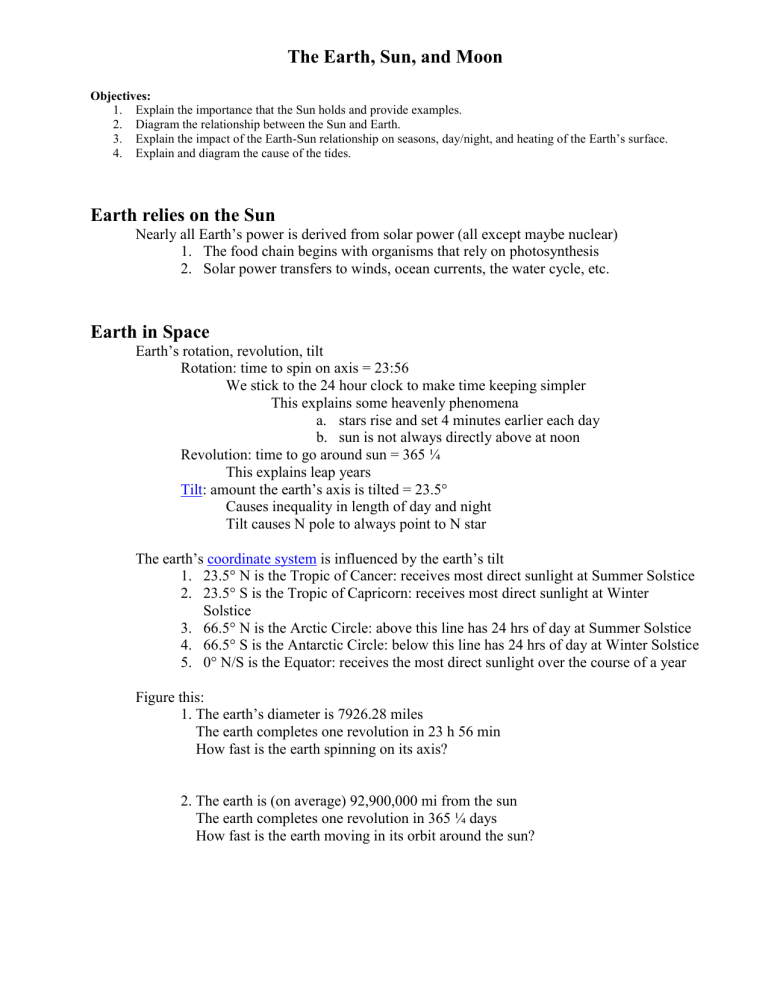
The Earth, Sun, and Moon
Objectives:
1.
Explain the importance that the Sun holds and provide examples.
2.
Diagram the relationship between the Sun and Earth.
3.
Explain the impact of the Earth-Sun relationship on seasons, day/night, and heating of the Earth’s surface.
4.
Explain and diagram the cause of the tides.
Earth relies on the Sun
Nearly all Earth’s power is derived from solar power (all except maybe nuclear)
1.
The food chain begins with organisms that rely on photosynthesis
2.
Solar power transfers to winds, ocean currents, the water cycle, etc.
Earth in Space
Earth’s rotation, revolution, tilt
Rotation: time to spin on axis = 23:56
Tilt
We stick to the 24 hour clock to make time keeping simpler
This explains some heavenly phenomena a.
stars rise and set 4 minutes earlier each day b.
sun is not always directly above at noon
Revolution: time to go around sun = 365 ¼
This explains leap years
: amount the earth’s axis is tilted = 23.5°
Causes inequality in length of day and night
Tilt causes N pole to always point to N star
The earth’s coordinate system is influenced by the earth’s tilt
1.
23.5° N is the Tropic of Cancer: receives most direct sunlight at Summer Solstice
2.
23.5° S is the Tropic of Capricorn: receives most direct sunlight at Winter
Solstice
3.
66.5° N is the Arctic Circle: above this line has 24 hrs of day at Summer Solstice
4.
66.5° S is the Antarctic Circle: below this line has 24 hrs of day at Winter Solstice
5.
0° N/S is the Equator: receives the most direct sunlight over the course of a year
Figure this:
1. The earth’s diameter is 7926.28 miles
The earth completes one revolution in 23 h 56 min
How fast is the earth spinning on its axis?
2. The earth is (on average) 92,900,000 mi from the sun
The earth completes one revolution in 365 ¼ days
How fast is the earth moving in its orbit around the sun?
Earth-Sun Relationships
Unequal solar energy to planet
Areas near equator (between tropics) are warmer
Cancer = 23.5° N (gets most direct solar energy in our summer months)
Capricorn = 23.5° S (gets most direct solar energy in our winter months)
Areas near poles are colder
Artic Circle = 66.5° N (above gets 24 hrs of sun in our summer months)
Antarctic Circle = 66.5° S (above gets 24 hrs of sun in our winter months)
Seasons ( animation )
Tilt of earth causes unequal solar energy at different times of year (assume n hem)
Special events during solar calendar
Equinox: daylight and night are approximately equal: 12 hours each
Solstice: longest day/shortest night OR longest night/shortest day
Special dates of solar calendar
December 21: winter solstice
March 20: spring equinox
June 21: summer solstice
September 22: fall equinox
Why do these solar events occur?
Animation
Tides ( picture ): Earth-Sun-Moon Relationships
Sun pulls w/moon: spring tide = highest tides during full and new moons
Sun pulls w/o moon: neap tide = lowest tides during quarter moons
Graph and diagram comparing neap and spring tides
